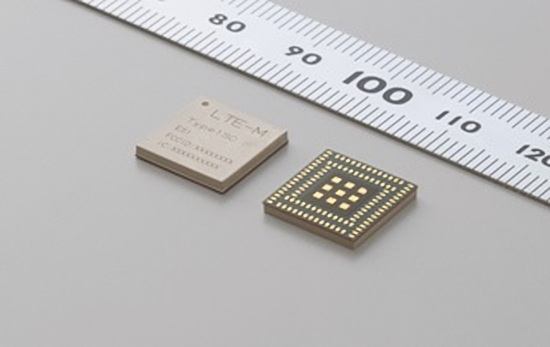Murata has selected Altair Semiconductor’s dual-mode CAT-M1/NB1 chipset and STMicroelectronics’ STM32 MCU to develop its cellular IoT solutions. These flexible and optimized solutions enable LTE connectivity for multiple vertical markets, including ultra-small Asset Tags, pharmaceuticals/healthcare devices, wearable devices and GNSS trackers. The solutions will include support for Amazon Web Services (AWS) and other cloud-based service providers. The collaboration with Altair, an industry leader in cellular IoT connectivity, and ST, the industry leader in low-power microcontrollers, ensures that we are able to deliver best-in-class solutions. Our Cellular IoT modules provide customers with the flexibility and optimization needed to realize their IoT solutions. These modules deliver unparalleled size, power, and cost efficiency. The LTE-M1/NB1 module with GNSS will be the world’s smallest form factor solution enabling new possibilities and applications. Additionally, their simplicity and high level of integration will drastically reduce time to market.
Murata selected Altair’s highly compact ALT1250 chipset to power its Type 1SE and Type 1SC end device and module, respectively. The ALT1250 is the most integrated and advanced chipset that supports CAT-M1 and NB1. It incorporates Altair’s OneSKUTM RF technology to enable multiple LTE band combinations, as well as CAT-M1 and NB1 functionality with a single hardware design. Additional features include GNSS and cellular-based positioning engines, an IoT-optimized security framework, and integrated VoLTE support. The ALT1250’s ultra-low power consumption – including both 3GPP power saving mode (PSM) and eDRX – increases battery life to up to 15 years in certain use cases. The ALT1250 will be firmware-upgradable to support NB2.
Not only is the 1SC module a flexible option, the world’s smallest available CAT-M1/NB1 module measures just 11.1×11.4×1.4 mm and is also less than half the area of many other commercial solutions. IoT solution providers can pair this module with any of the 700+ part numbers of STM32 MCU portfolio to address a wider range of IoT applications.
Measuring 15 x 17 x 1.4 mm, the Type 1SE device is the optimized choice, with minimum power consumption and size. The STM32L462REY6 is an ultra-low-power MCU which features an Arm Cortex-M4 running at 80MHz with 512KB Flash and 160 KB SRAM. The STM32L4 MCU series features the best-in-class ultra-low-power architecture available on the market with several ultra-low-power modes, including a Standby mode that consumes only 450nA while retaining 16 KBytes of SRAM and RTC running. It also delivers a super-optimized Shutdown mode draws only 8nA. The ST33J2M0 Secure Microcontroller is based on the 32-bit ARM® SecurCore® SC300 processor, features 2 Mbytes of embedded flash to store securely sensitive data, hardware accelerators for advanced cryptographic functions, and additional security features to help protecting against advanced form of attacks.





